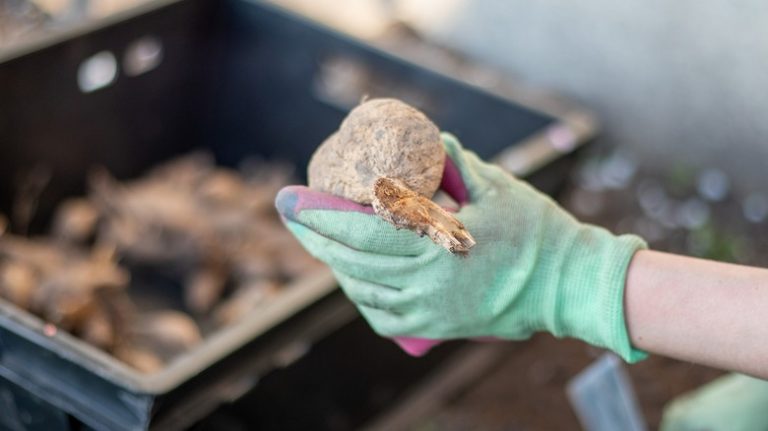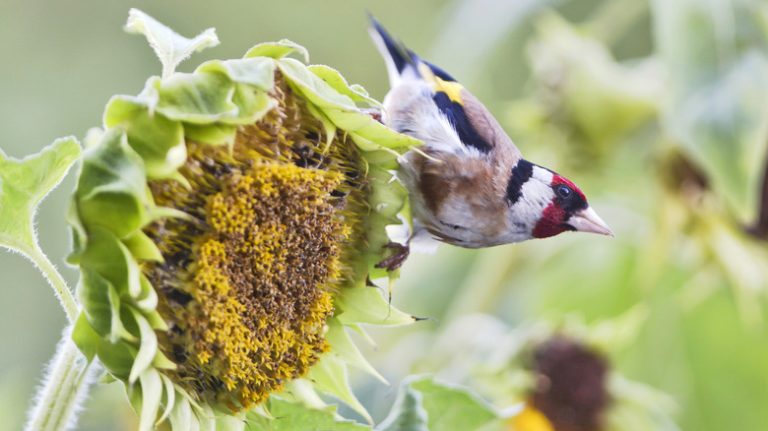Welcome, dear reader, to the world of nasturtiums – a beautiful and versatile plant that can bring both beauty and flavor to your garden and your plates. Nasturtiums, also known by their scientific name Tropaeolum majus, are native to South America but have long been utilized in Greek and other cuisines for their unique taste and various health benefits.
The word “nasturtium” actually comes from the Latin term “nasus tortus,” which means “twisted nose.” This name is very fitting because nasturtiums have a distinctive peppery flavor that can bring a pleasant kick to any dish. And not only do the flowers add a pop of color to any plate, but the leaves can also be utilized in many ways to transform your cooking.
One of the easiest and most popular ways of using nasturtium leaves and flowers is in salads. The leaves, which have a tender and slightly peppery taste, can be cut into ribbons and added to salads to bring a unique twist to the dish. The flowers, on the other hand, can be used whole or torn into petals to add a beautiful touch to any salad. And if you’re feeling adventurous, you can even stuff the flowers with diced mushrooms or other fillings to create tasty little packages known as “dolmades.”
But the uses of nasturtiums don’t stop there. The leaves can also be used to make a delicious pesto. Just like traditional pesto, you’ll need a food processor or blender to combine the leaves with garlic, nuts, Parmesan cheese, and olive oil. The result is a vibrant green spread that can be used as a dip, a spread for sandwiches, or a sauce to accompany roasted vegetables or grilled meats. And if you’re a fan of pickled vegetables, you can use the flower buds to create a unique vinegar. Simply soak the buds in vinegar for a few weeks, then remove and strain. The result is a tangy and slightly spicy vinegar that can add flavor to your pantry.
But besides their culinary uses, nasturtium leaves and flowers also have healing properties. They are rich in vitamin C and can help boost the immune system. They also have antibacterial properties and can be used externally to treat minor wounds and skin irritations. In fact, some people even use a crushed nasturtium leaf as a natural remedy for acne. So, whether you’re interested in their culinary or medicinal uses, there’s no denying the beauty and versatility of nasturtiums.
So next time you’re in your garden or foraging for greens, don’t forget to grab some nasturtium leaves and flowers. They can add a pop of color, flavor, and healing to your dishes and your life.
Edible Nasturtium Leaves Foraging for Your Dinner
Nasturtium leaves are not only beautiful, but they are also easy to forage for. This vine-like plant is known for its large, round leaves that have a mottled green color. The word “nasturtium” actually comes from the Latin word “nasus tortus,” which means “twisted nose,” because the leaves have a slightly peppery taste that can make your nose tingle when you eat them.
The primary use for nasturtium leaves is in salads. They can add a bright and tangy flavor to any dish. Many chefs love using nasturtium leaves to enhance the taste of other foods. They can be used in pesto, stirred into soup, or even baked into bread. The possibilities are endless!
Not only are nasturtium leaves delicious, but they also have some healing properties. They are high in vitamin C and have been used for centuries to boost the immune system and promote healing. Some people even use nasturtium leaves to soothe skin irritations and make homemade beauty products.
If you’re interested in foraging for nasturtium leaves, there are a few things you should know. First, make sure you are picking them from a plant that you know is safe to eat. Nasturtiums are pretty easy to identify, with their vibrant flowers and large, round leaves. Avoid any plants that look diseased or have pests.
When harvesting the leaves, be sure to do so carefully. Use a pair of scissors or your fingers to gently remove the leaves from the stem. You can leave a few leaves on the plant so that it can continue to grow and produce more. Rinse the leaves in water to remove any dirt or insects, and then they’re ready to use!
There are many ways to enjoy nasturtium leaves in your cooking. Some people like to simply add them to salads or use them as a garnish on top of other dishes. Others get more creative and use them to make capers or pickles. You can also try steeping the leaves in apple cider vinegar to make a tangy dressing or marinade.
If you’re feeling adventurous, you can even try cooking nasturtium leaves like you would spinach or watercress. They become tender and flavorful when cooked, and can be a delicious addition to any meal.
So next time you see some beautiful nasturtium leaves, don’t just admire their beauty. Pick them and put them on your plate! You’ll be amazed at the delicious flavors they can add to your dishes.
Are Nasturtiums Edible
Nasturtiums are not only beautiful flowers, but they are also edible. Both the leaves and flowers of the nasturtium plant can be eaten, and they have a peppery flavor which adds a unique touch to your dishes.
The larger, more mature leaves of the nasturtium plant are often used in recipes. They can be added to salads, stir-fries, or even used as a wrap for other ingredients. Nasturtium leaves are also a common ingredient in pesto, giving it a fresh and slightly spicy taste.
If you’re thinking about using nasturtium leaves or flowers in your cooking, there are a few things to keep in mind. First, make sure to wash them thoroughly before consumption. Remove any dirt or bugs that may be hiding in the leaves or flowers.
One popular way to enjoy nasturtium flowers is by making vinegar. Simply place the flowers in a large jar and cover them with white wine vinegar. Let the mixture sit for a few weeks, then strain out the flowers and pour the vinegar into a bottle. This homemade nasturtium vinegar can be used to add a tangy flavor to your dishes.
Another creative way to use nasturtium flowers is by making capers. To do this, pickle the unopened flower buds in a mixture of vinegar and salt. Once they have fermented for a few weeks, these nasturtium capers can be sprinkled over salads or added to pasta dishes.
When foraging for nasturtiums, it’s important to carefully identify the plant. Nasturtium leaves and flowers come in a wide range of colors, from vibrant orange to deep red. The plant has distinctive round leaves and trumpet-shaped flowers. If you’re unsure about identifying nasturtiums, it’s always a good idea to consult a field guide or do a quick Google search to confirm.
In addition to being edible, nasturtiums are also known for their healing properties. The plant has been used in traditional medicine for centuries, and its leaves are rich in vitamin C. Some people believe that nasturtiums can help with various ailments, such as acne and upper respiratory infections.
In conclusion, nasturtiums are not only a beautiful addition to your garden, but they can also be a tasty and nutritious addition to your dinner table. Whether you’re using the leaves or flowers, nasturtiums can transform an ordinary dish into something bright and flavorful. So next time you’re in the mood for something a little different, why not give nasturtiums a try?
5 Easy Steps to Transform Your Pantry
Transforming your pantry can be a fun and rewarding project that will help you create a more organized and efficient space for storing your food. Here are 5 easy steps to get you started:
| Step 1: Remove | Start by emptying out your pantry and removing any expired or unused items. This will make it easier to see what you have and what you need to restock. |
| Step 2: Organize | Next, organize your pantry by grouping similar items together. Use baskets or storage containers to keep things neat and tidy. |
| Step 3: Label | Labeling your pantry shelves and containers will make it easier to find what you’re looking for. Use a label maker or simply write on sticky notes. |
| Step 4: Stock Up | Now it’s time to restock your pantry with essentials. Be sure to include a variety of healthy options such as whole grains, canned vegetables, and lean proteins. |
| Step 5: Add Some Green | Add a touch of beauty to your pantry by growing some plants. Nasturtiums are a great option as their leaves and flowers are edible. They’re also known for their healing properties and can be used in a variety of dishes. |
With these 5 easy steps, you’ll have a transformed pantry that is not only organized but also aesthetically pleasing. Happy pantry transformation!
Using the Leaves of Nasturtium
Nasturtiums are not just beautiful flowers, they also have edible leaves that offer a variety of uses in the kitchen. Whether you grow your own nasturtium plants or forage for them in the wild, the tender leaves of this plant can be a valuable addition to your culinary repertoire.
One of the easiest ways to use nasturtium leaves is by adding them to salads. Their vibrant green color and slightly peppery taste can bring a fresh and unique flavor to your plates. You can also use them as a garnish for other dishes, just like you would use parsley or other greens.
If you’re feeling more adventurous, you can try making nasturtium pesto. Simply blend a handful of nasturtium leaves with some nuts, garlic, olive oil, and grated Parmesan cheese. The result is a flavorful and colorful spread that can be used on bread, pasta, or as a dip.
Another wonderful use for nasturtium leaves is to use them for making a stuffed wild mushroom dish. The leaves can be used to wrap the mushrooms before baking them in the oven. The combination of the earthy mushrooms and the peppery leaves creates a delicious and visually appealing dish.
Nasturtium leaves can also be used to infuse vinegar. Simply place a few leaves in a bottle, pour vinegar over them, and let them steep for a few weeks. The resulting infused vinegar can be used in dressings, marinades, or as a tangy addition to various dishes.
When using nasturtium leaves, it’s important to note that they have a strong flavor. Therefore, you should use them sparingly and taste as you go to ensure that the flavor doesn’t overpower your dish. Additionally, if you’re using larger leaves, you may want to remove the tough stems before using them in your recipes.
In conclusion, nasturtium leaves have a unique and flavorful taste that can transform your dishes into something truly special. From salads and garnishes to pesto and infused vinegar, there are endless possibilities when it comes to using these versatile leaves. So, next time you see those bright orange nasturtium flowers blooming in your garden or in the wild, don’t just admire them – pick some of their leaves and get creative in the kitchen!
Other ways to Use the Nasturtium Plant
In addition to making a beautiful flower for your garden, nasturtiums have many other uses. The leaves and flowers of the nasturtium plant can be used in a variety of dishes, adding a unique flavor and vibrant color.
One popular use for nasturtium leaves is in dolmades, a traditional Greek dish. The leaves are blanched and then used to wrap a mixture of rice, onion, parsley, and lemon. The result is a delicious and fragrant appetizer that is perfect for any season.
Nasturtium flowers also make a great addition to salads. Their slightly peppery flavor pairs well with other greens like watercress. You can simply add a few flowers to your salad for a pop of color, or you can use them to create a beautiful and edible garnish.
For those who enjoy foraging, nasturtium plants are a great find. The leaves and flowers can be used in a variety of recipes, and they’re often found growing wild in many regions. Just be sure to follow proper foraging steps and only gather from areas where it is legal and safe to do so.
If you’re interested in using nasturtium leaves and flowers in your cooking, there are a few things to keep in mind. First, the leaves and flowers are most tender when they are young and small. As the plant grows, the leaves become larger and more tough, so it’s best to harvest them when they’re still young.
There’s always the debate between whether to use the flowers or the leaves. While both can be used, the flowers are generally more popular for their vibrant colors and unique flavor. The leaves, on the other hand, have a slightly milder taste and can be used as a substitute for watercress.
One simple way to use nasturtium leaves is to make a pesto. Just blend a few cups of nasturtium leaves with garlic, Parmesan cheese, pine nuts, and olive oil. The result is a flavorful and vibrant green sauce that can be used on pasta, sandwiches, or as a marinade.
If you’re not a fan of the peppery flavor of nasturtiums, you can also use the flowers and leaves to make a vinegar. Simply place the flowers and leaves in a jar and cover them with vinegar. Let the mixture sit for a few weeks, strain out the solids, and you’ll be left with a flavorful vinegar that can be used in dressings and marinades.
Whether you’re a seasoned chef or just starting out in the kitchen, nasturtiums are a versatile plant that can add a pop of color and flavor to your dishes. So next time you’re looking to try something new, why not give nasturtiums a try? Your taste buds and your friends will thank you!



